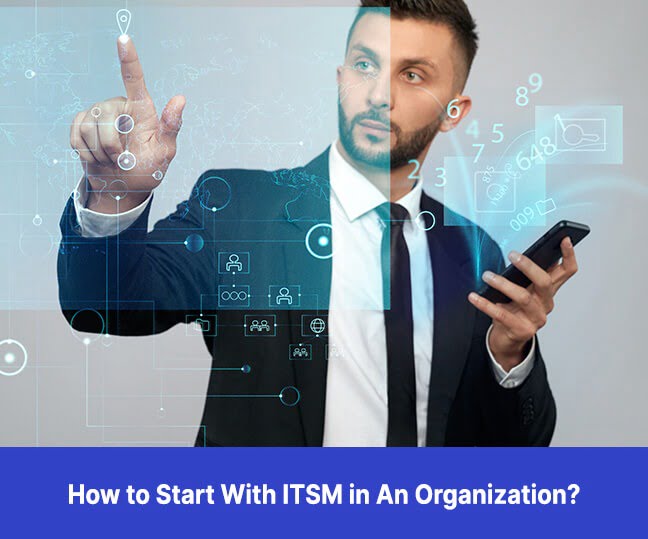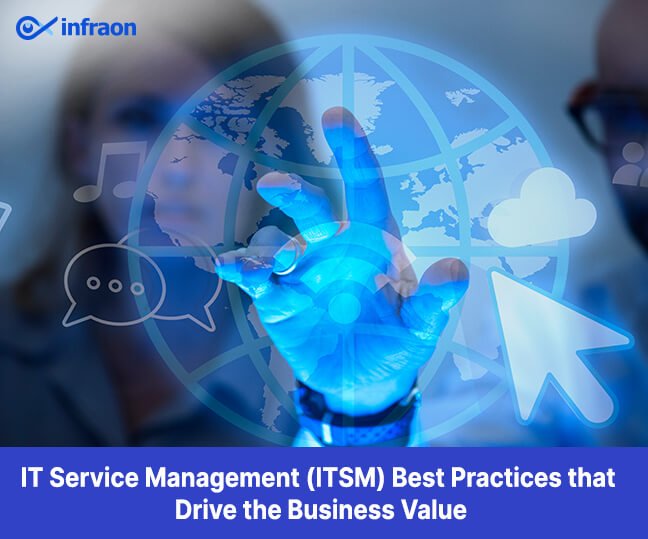In today’s tech-driven business landscape, efficient IT management is a cornerstone of success. Two essential tools in this realm are IT Service Management (ITSM) and Configuration Management Database (CMDB). They work together to ensure seamless operations and optimal asset utilization. In this blog, we’ll explore ITSM vs. CMDB while comparing the two based on their importance and use cases.
Related article: Shaping the Future of ITSM with AI-Enabled Collaborative Workspace
About ITSM: Streamlining Service Excellence
IT Service Management (ITSM) is a strategic approach that revolves around designing, delivering, managing, and improving IT services within an organization. ITSM aims to ensure that IT services align with business needs, delivering value, and a smooth user experience. It encompasses practices, processes, and tools that facilitate service delivery, incident management, change control, and problem resolution.
About CMDB: Assets at a Glance
Configuration Management Database (CMDB) is a foundation of IT management. It acts as a repository for an organization’s IT assets and their interconnections. Think of it as a digital blueprint of the IT infrastructure, including hardware, software, applications, and networks. CMDB captures attributes, configurations, relationships, dependencies, and changes in assets.
CMDBs enhance visibility, facilitate problem resolution, optimize resource allocation, and support compliance efforts. They provide a dynamic view of the IT landscape, aiding in tasks like tracking hardware lifecycles and mapping software relationships. CMDB cybersecurity is crucial as it tracks security configurations, vulnerabilities, and patches.
Comparison: ITSM vs. CMDB
The comparison between IT Service Management (ITSM) and Configuration Management Database (CMDB) reveals a dynamic interplay between strategic planning and tactical execution. Let’s delve deeper into the distinctions that make each of these pillars unique while highlighting their collaborative essence:
1) Focus and functionality
ITSM: At the heart of ITSM lies a strategic perspective. Its primary focus is on optimizing the delivery and management of IT services to meet the organization’s business goals. ITSM encompasses a spectrum of practices, processes, and methodologies designed to ensure that IT services align with user needs and expectations.
CMDB: In contrast, CMDB centers around the granular details of an organization’s IT assets. It captures and organizes data related to configurations, attributes, relationships, and dependencies of various assets. CMDB serves as a tactical repository that provides insights into the composition and layout of the IT infrastructure.
2) Scope and coverage
ITSM: The scope of ITSM extends across the entire lifecycle of IT services. It spans from the initial design and deployment of services to ongoing management, monitoring, and continual improvement. ITSM encompasses a wide array of processes, including incident management, problem resolution, change management, and service request fulfillment.
CMDB: CMDB’s scope is narrower in comparison, with a specific focus on managing the configuration data of IT assets. It serves as a comprehensive catalog of assets, capturing their configurations and relationships. This data is pivotal for change management, asset tracking, and maintaining a historical record of alterations.
3) Interdependence and collaboration
ITSM and CMDB: Although ITSM and CMDB serve distinct functions, they are highly interdependent. ITSM relies on the data and insights provided by CMDB to effectively manage services and incidents. In the event of an incident, ITSM leverages CMDB’s configuration data to identify the affected assets and understand their interconnectedness. This collaboration streamlines incident response and minimizes downtime.
4) Cybersecurity and risk mitigation

ITSM: ITSM is not just about optimizing services; it’s also a pillar of cybersecurity. It ensures that IT operations are fortified with robust security measures, safeguarding digital assets from potential threats. With a proactive approach to risk mitigation, ITSM acts as a shield against unauthorized access, data breaches, and cyber vulnerabilities.
CMDB: CMDB plays a critical role in bolstering cybersecurity efforts. By maintaining an up-to-date record of security-related configurations, vulnerabilities, and patches, CMDB cybersecurity supports risk management and compliance. The ability to track and monitor security attributes of assets within the CMDB enhances an organization’s ability to proactively address potential threats and vulnerabilities.
5) Strategic insight and tactical precision
ITSM: Positioned strategically, ITSM focuses on aligning IT services with business objectives. It ensures that IT services contribute to the organization’s overall goals and enhance user satisfaction. The strategic insights gained through ITSM drive continuous improvement and innovation.
CMDB: On a tactical level, CMDB provides precise details about the attributes and relationships of IT assets. These details are essential for executing operational tasks such as change management, configuration tracking, and problem resolution.
Related article: Jira ITSM vs. ServiceNow vs. Infraon in 2023
Conclusion
While ITSM sets the overarching direction, ensuring that IT services are a strategic asset for the organization, CMDB delves into the intricacies of asset configurations and relationships. Together, they create a blend of strategic planning and operational execution.
The collaborative essence of ITSM and CMDB is undeniable. While ITSM provides the roadmap for delivering efficient and user-centric IT services, CMDB offers the tools needed to navigate the intricate maze of IT assets. The partnership between ITSM and CMDB empowers organizations to achieve a delicate balance, where strategic vision is complemented by meticulous attention to detail.


















